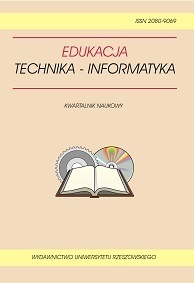The „E-classroom” Project (Web Site) of the Town Library „Karlo Bijelicki” in Sombor Intended for (pre)Schoolers
Keywords:
educational information technology, „E-classrooms” (Web Site), a modern kindergarten and school, Generation „Z” and MENSA, the current school plans and syllabiiAbstract
The main city library „Karlo Bijelicki” from Sombor is composed of The Children’s Library existing as a special separate building, intended for preschoolers and primary school children from all over the municipality. The institution has recently prompted the development of educational and information technology in order to adress the needs of generation „Z” and ackowledge MENSA recommendations. This project that has emerged is called The „E-classrooms” Project (and is a Web Site) and is one of its kind in Serbia. The immediate advantages of the project (when it starts in 2017 as a part of the national primary school curriculum) are that children will be able to 125 learn, identify and be assessed online. In fact, reviewed litererature has covered all available resources to which the library and the city researches have accessed (space, professional staff, schools and practitioners, Faculty of Education, schooling educational profiles – media designers in education, preschool teachers, teachers and librarians to Ministry of Education). The above mentioned institutions have all worked in developping this project and as a joint cooperation this idea should be turned into reality. The paper aims at presenting this project.Downloads
Published
2015-09-30
How to Cite
HILČENKO, S., & MEDIĆ, B. (2015). The „E-classroom” Project (Web Site) of the Town Library „Karlo Bijelicki” in Sombor Intended for (pre)Schoolers. Journal of Education, Technology and Computer Science, 13(3), 119–125. Retrieved from https://journals.ur.edu.pl/jetacomps/article/view/6445
Issue
Section
VIDEO EDUCATION. CURRENT STATUS AND DEVELOPMENT PROSPECTS
License
Copyright (c) 2015 Journal of Education, Technology and Computer Science

This work is licensed under a Creative Commons Attribution-ShareAlike 4.0 International License.

